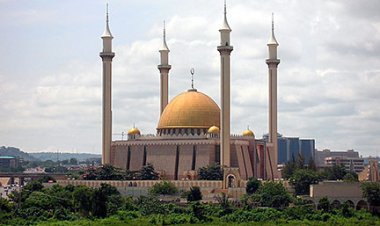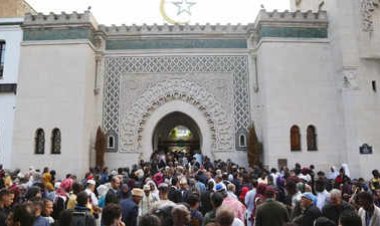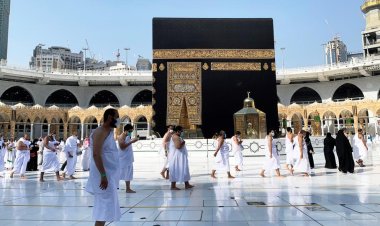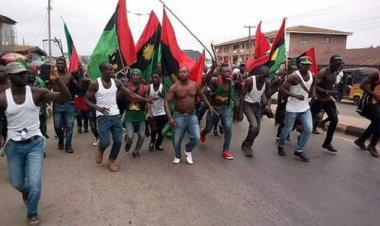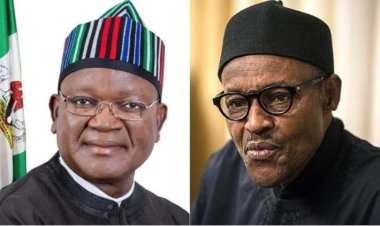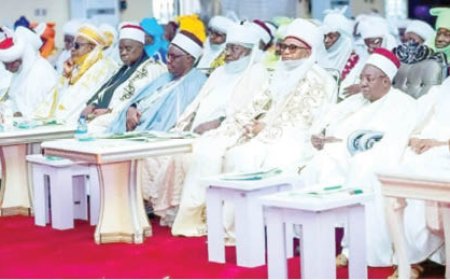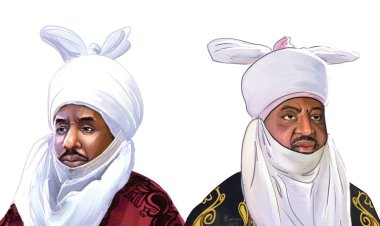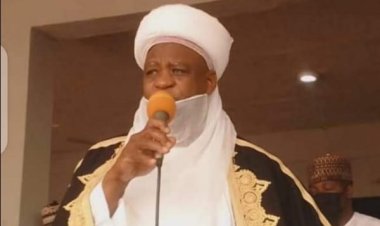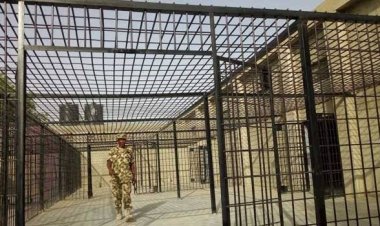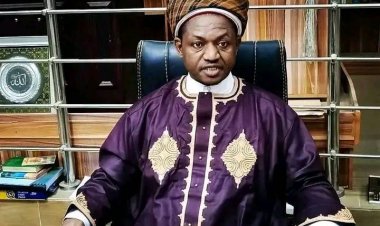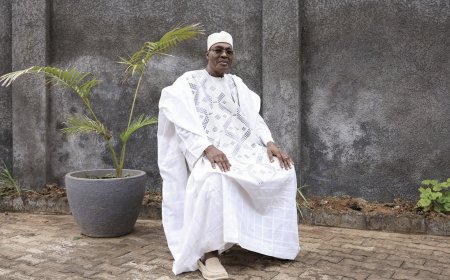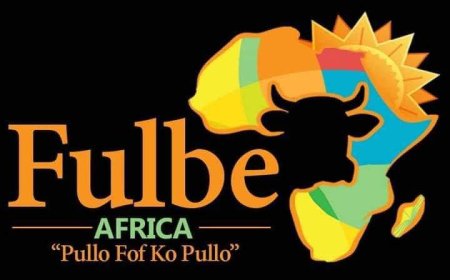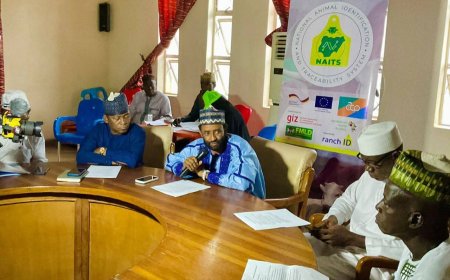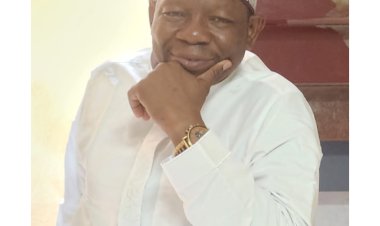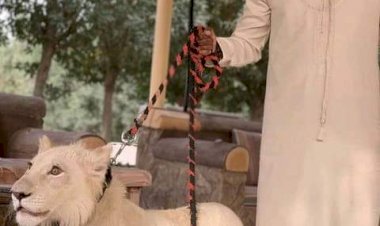The History of My People and Yours: The Fulani People of West Africa
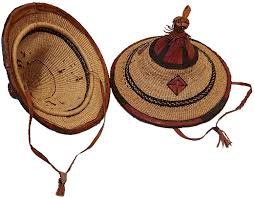
Fula or Fulani or Fulbe (the latter being an Anglicization of the word in their language, Fulɓɓe) are an ethnic group of people spread over many countries, predominantly in West Africa, but found also in Central Africa and The Sudan of east Africa. The countries in Africa where they are present include Mauritania, Senegal, Guinea,
The Gambia, Mali, Nigeria, Sierra Leone, Benin, Burkina Faso, Guinea Bissau, Cameroon, Côte d’Ivoire (Ivory Coast), Niger, Togo, the Central African Republic, Ghana, Liberia, and as far as Sudan in the east. Fulas are not a majority in every country they live, but in Guinea they represent a plurality of the population (largest single group). There are also many names (and spellings of the names) used in other languages to refer to the Fulɓe.
Fulani in English is borrowed from the Hausa term. Fula, from Manding languages is also used in English, and sometimes spelled Fulah or Foulah. Fula and Fulani are commonly used in English, including within Africa. The French borrowed the Wolof term Pël, which is variously spelled: Peul, Peulh, and even Peuhl. More recently the Fulfulde / Pulaar term Fulɓe, which is a plural noun (singular, Pullo) has been adapted to English as Fulbe, which some people use. In Portuguese it’s Fula or Futafula.
Related Groups
A closely related group is the Tukolor (Toucouleur) in the central Senegal River valley. These people are often referred to together with Fulɓe of the region as Haalpulaar’en (Pulaar-speakers). Fula society in some parts of West Africa features the “caste” divisions typical of the region. In Mali, for instance, those who are not ethnically Fula have been referred to as yimɓe pulaaku (people of the Fula culture). The Woɗaaɓe, also known as the Bororo, are a subgroup of the Fula people.
Traditional Livelihood
The Fulani are traditionally a nomadic, pastoralist, trading people, herding cattle, goats and sheep across the vast dry hinterlands of their domain, keeping somewhat separate from the local agricultural populations.
Origins and Spread
The early origin of Fulani People is most fascinating and deepened in mystery with widely divergent opinions. Many scholars believe that they are of Judaeo-Syrian origin. However, it is generally recognized that Fulani descended from nomads from both North Africa and from sub-Sahara Africa. They came from the Middle-East and North Africa and settled into Central and West Africa from the Senegal region they created the Tekruur Empire which was contemporary to the Ghana Empire. Then, they spread in all the countries in West-Africa, continuing to lead their nomadic life style. They created here and there mixed states where they sometimes were the dominant group. But more often, they were absorbed by the indigenous population whom they had dominated.
While some have speculated over the origin of Fulani people, current linguistic and genetic evidence suggests an indigenous West African origin among the Peul. The vast majority of genetic lineages associated with them reflect those most commonly seen in other West Africans. Their language is also of West African origin, most closely related to that of the Wolof and Serer ethnic groups. Historical and archaeological records indicate that Peul-speakers have resided in western Africa since at least the 5th century A.D. as well. Interestingly, rock paintings in the Tassili-n-Ajjer suggests the presence of proto-Fulani cultural traits in the region by at least the fourth millennium B.C. Scholars specializing in Fulani culture believe that some of the imagery depicts rituals that are still practiced by contemporary Fulani people.
The Fulani were the first group of people in West Africa to convert to Islam through jihads, or holy wars, and were able to take over much of West Africa and establish themselves not only as a religious group but also as a political and economic force. They are the missionaries of Islam and continued to conquer much of West Africa. The Fulani are primarily nomadic herders and traders. Through their nomadic lifestyle they established numerous trade routes in West Africa. Many times the Fulani go to local markets and interact with the people, getting news and spreading it through much of West Africa.
The History of the Fulani?
The history of the Fulani seems to begin with the Berber people of North Africa around the 8th or 11th century AD. As the Berbers migrated down from North Africa and mixed with the peoples in the Senegal region of West Africa the Fulani people came into existence. Over a thousand year period from AD 900 – 1900, they spread out over most of West Africa and even into some areas of Central Africa. Some groups of Fulani have been found as far as the western borders of Ethiopia. As they migrated eastward they came into contact with different African tribes. As they encountered these other peoples, they conquered the less powerful tribes.
Along the way many Fulani completely or partially abandoned their traditional nomadic life in favor of a sedentary existence in towns or on farms among the conquered peoples. The nomadic Fulani continued eastward in search of the best grazing land for their cattle. Their lives revolved around and were dedicated to their herds. The more cattle a man owned, the more respect he was given. Today, some estimate as many as 18 million Fulani people stretch across the countries of West Africa. They remain to be the largest group of nomadic people in the world.
Rise to Political Dominance
Beginning as early as the 17th and 18th centuries, but mainly in the 19th century, Fulas and others took control of various states in West Africa. These included the Fulani Empire founded by Usman dan Fodio (which itself included smaller states), Fouta Djallon, Massina and others. M. Delafosse suggested that with the expansion of the Fulani from Futa to Darfur, all this region became known to the Arabs as Takrur.
Culture & Language
The language of Fulas is called Pulaar or Fulfulde depending on the region, or variants thereof. It is also the language of the Tukulor. All Senegalese who speak the language natively are known as the Halpulaar or Haalpulaar’en, which stands for “speakers of Pulaar” (“hal” is the root of the Pulaar verb haalugol, meaning “to speak”). In some areas, e.g. in northern Cameroon, Fulfulde is a local lingua franca.
With the exception of Guinea, Fulas are minorities in every country they live in (most countries of West Africa). So some also speak other languages, for example:
Portuguese and Kriol in Guinea-Bissau
French and Arabic in Mauritania
Hausa and French in Niger
French and English in Cameroon
Wolof and French in Senegal
Sango and French in Central African Republic
Bambara and French in Mali
English, Hausa and Ghanaian languages in Ghana
English and some indigenous languages in Sierra Leone, particularly Krio, that lingua franca.
Hausa, other Nigerian languages and English in Nigeria
Fula are primarily known to be pastoralists, but are also traders in some areas. Most Fula in the countryside spend long times alone on foot, moving their herds; they were the only major migrating people of West Africa, though most Fula now live in towns or villages.
[As they conquered different towns and peoples, they would take captives from those tribes. Those captives became their slaves, adopting the language and lifestyle of the Fulani, and working their fields for them. Today, although no longer officially slaves, the ex-slave caste (rimaaybe or maccube) has no sense of their original ethnicity. Although distinct ethnically from the true Fulbe, their identity is now so intertwined with them that they are themselves called Fulani.
Over 99% of Fulani are Muslims. It is said that to be a Fulani is to be a Muslim. There are a small group of Fulani called the Mbororo, or Wodaabe, found in Niger and Cameroon, who resisted Islam, and have kept much of their pre-Islamic way of life and beliefs. And in different places, small groups of Fulani are choosing to follow the way of Christ. However, the vast majority are Muslims, most practicing a version of folk Islam, integrating animistic practices into their Muslim religious duties.] Source: Under the Acacias
[In 1804 Usuman Dan Fodio, a studious and charismatic Muslim Fulani scholar, began to preach the reformist ideology in the Hausa kingdoms. His movement became a revolution when in 1804, seeing himself as God’s instrument, he preached a jihad against the Hausa kings whom he felt were not following the teachings of the Prophet. A great upheaval followed in which the Fulani took control of most of the Hausa states of northern Nigeria in the western Sudan. A new kingdom, based on the city of Sokoto, developed under Dan Fodio’s son and brother. The Fulani expansion was driven not only by religious zeal but by political ambitions, as the attack on the well-established Muslim kingdom of Bornu demonstrated. The result of this upheaval was the creation of a powerful Sokoto state under a caliph, whose authority was established over cities such as Kano and Zaria and whose rulers became emirs of provinces within the Sokoto caliphate.
By the 1840s the effects of Islamization and the Fulani expansion were felt across much of the interior of West Africa. New political units were created, a reformist Islam that sought to eliminate pagan practices was spread, and social and cultural changes took place in the wake of these changes. Literacy, for example, became more widely dispersed and new centers of trade, such as Kano, emerged in this period. Later jihads established other new states along similar lines. All of these changes had long-term effects on the region of the western Sudan.
These upheavals – moved by religious, political, and economic motives -were not unaffected by the external pressures on Africa. They fed into the ongoing processes of the external slave trades and the development of slavery within African societies. Large numbers of captives resulting from the wars were exported down to the coast for sale to the Europeans, while another stream of slaves crossed the Sahara to North Africa. In the western and central Sudan the level of slave labor rose, especially in the larger towns and along the trade routes.
Slave villages, supplying royal courts and merchant activities as well as a sort of plantation system, developed to produce peanuts and other crops. Slave women spun cotton and wove cloth for sale, slave artisans worked in the towns, and slaves served the caravan traders, but most slaves did agricultural labor. By the late 19th century regions of the savanna contained large slave populations – in some places as much as 30 to 50 percent of the whole population. From the Senegambia region of Futa Jallon, across the Niger and Senegal basins, and to the east of Lake Chad, slavery became a central feature of the Sudanic states and remained so through the 19th century.] Source: Africa And The Africans In The Age Of The Atlantic Slave Trade
[People whom historians identify as Fulani entered present-day Senegal from the north and east. It is certain that they were a mixture of peoples from northern and sub-Saharan Africa. These pastoral peoples tended to move in an eastern direction and spread over much of West Africa after the tenth century.
Their adoption of Islam increased the Fulanis’ feeling of cultural and religious superiority to surrounding peoples, and that adoption became a major ethnic boundary marker. The Toroobe, a branch of the Fulani, settled in towns and mixed with the ethnic groups there. They quickly became noted as outstanding Islamic clerics, joining the highest ranks of the exponents of Islam, along with Berbers and Arabs. The Town Fulani (Fulbe Sirre) never lost touch with their Cattle Fulani relatives, however, often investing in large herds themselves. Cattle remain a significant symbolic repository of Fulani values.
The Fulani movement in West Africa tended to follow a set pattern. Their first movement into an area tended to be peaceful. Local officials gave them land grants. Their dairy products, including fertilizer, were highly prized. The number of converts to Islam increased over time. With that increase, Fulani resentment at being ruled by pagans, or imperfect Muslims, increased.
That resentment was fueled by the larger migration that occurred during the seventeenth century, in which the Fulani migrants were predominantly Muslim. These groups were not so easily integrated into society as earlier immigrants had been. By the beginning of the eighteenth century, revolts had broken out against local rulers. Although these revolts began as holy wars (jihads), after their success they followed the basic principle of Fulani ethnic dominance.
The situation in Nigeria was somewhat different from that elsewhere in West Africa in that the Fulani entered an area more settled and developed than that in other West African areas. At the time of their arrival, in the early fifteenth century, many Fulani settled as clerics in Hausa city-states such as Kano, Katsina, and Zaria. Others settled among the local peoples during the sixteenth and seventeenth centuries. By the seventeenth century, the Hausa states had begun to gain their independence from various foreign rulers, with Gobir becoming the predominant Hausa state.
The urban culture of the Hausa was attractive to many Fulani. These Town or Settled Fulani became clerics, teachers, settlers, and judges—and in many other ways filled elite positions within the Hausa states. Soon they adopted the Hausa language, many forgetting their own Fulfulde language. Although Hausa customs exerted an influence on the Town Fulani, they did not lose touch with the Cattle or Bush Fulani.
These ties proved useful when their strict adherence to Islamic learning and practice led them to join the jihads raging across West Africa. They tied their grievances to those of their pastoral relatives. The Cattle Fulani resented what they considered to be an unfair cattle tax, one levied by imperfect Muslims. Under the leadership of the outstanding Fulani Islamic cleric, Shehu Usman dan Fodio, the Fulani launched a jihad in 1804. By 1810, almost all the Hausa states had been defeated.
Although many Hausa—such as Yakubu in Bauchi—joined dan Fodio after victory was achieved, the Fulani in Hausaland turned their religious conquest into an ethnic triumph. Those in Adamawa, for instance, were inspired by dan Fodio’s example to revolt against the kingdom of Mandara. The leader was Modibo Adamu, after whom the area is now named. His capital is the city of Yola. After their victories, the Fulani generally eased their Hausa collaborators from positions of power and forged alliances with fellow Fulani.
Settlements
For the fully nomadic Fulani, the practice of transhumance, the seasonal movement in search of water, strongly influences settlement patterns. The basic settlement, consisting of a man and his dependents, is called a wuru. It is social but ephemeral, given that many such settlements have no women and serve simply as shelters for the nomads who tend the herds.
There are, in fact, a number of settlement patterns among Fulani. In the late twentieth century there has been an increasing trend toward livestock production and sedentary settlement, but Fulani settlement types still range from traditional nomadism to variations on sedentarism. As the modern nation-state restricts the range of nomadism, the Fulani have adapted ever increasingly complex ways to move herds among their related families: the families may reside in stable communities, but the herds move according to the availability of water. Over the last few centuries, the majority of Fulani have become sedentary.
Those Fulani who remain nomadic or seminomadic have two major types of settlements: dry-season and wet-season camps. The dry season lasts from about November to March, the wet season from about March to the end of October. Households are patrilocal and range in size from one nuclear family to more than one hundred people. The administrative structure, however, crosscuts patrilinies and is territorial. Families tend to remain in wet-season camp while sending younger males—or, increasingly, hiring non-Fulani herders—to accompany the cattle to dry-season camps.
Town Fulani live in much the same manner as the urban people among whom they live, maintaining their Fulani identity because of the prestige and other advantages to which it entitles its members. In towns, Fulani pursue the various occupations available to them: ruler, adviser to the ruler, religious specialist, landlord, business, trade, and so forth.
Economy
Subsistence and Commercial Activities: The Fulani form the largest pastoral nomadic group in the world. The Bororo’en are noted for the size of their cattle herds. In addition to fully nomadic groups, however, there are also semisedentary Fulani—Fulbe Laddi—who also farm, although they argue that they do so out of necessity, not choice. A small group, the Fulbe Mbalu or Sheep Fulani, rely on sheep for their livelihood.
The Toroobe are outstanding clerics in the Sunni branch of Islam. They have generally intermarried with Hausa and no longer speak Fulfulde. They are found practicing other urban trades: teaching, serving in government positions, engaging in legal activities, renting property, financing trade, and so forth.
Many of the other Town Fulani were actually slaves of the Fulani who now identify with the group because of their high prestige. These urban dwellers engage in all the trades one finds in Hausa towns from crafts to long-range trade throughout Africa and the world.
Industrial Arts: The Fulani are not particularly noted for industrial arts, except for those associated with cattle. They do engage in leatherworking and some craft production. Many of their former slaves who have assumed Fulani ethnicity follow the basic crafts of other West Africans: silver- and gold-smithing, ironworking, basket making, and similar crafts.
Trade: The Fulani are engaged in long-distance trade, generally involving cattle, with their Hausa colleagues. Often the Hausa are also butchers who control West African cattle markets by controlling access to Fulani cattle.
Division of Labor: Herding cattle is a male activity. Tending and milking cattle, however, are women’s work. Women may also sell dairy products; their graceful movement with containers of milk or cheese is a common sight in West African towns. Adolescent males traditionally have been in charge of moving the herds, whereas their elders deal with the political decisions and negotiate with sedentary people for the safe movement of the herds through farmlands.
Land Tenure: Land is held by—and inherited through—the patrilineage. As the Fulani have become increasingly sedentary—generally as a result of the pressure of the modern nation state and its centralized control—rights in land have become increasingly important.] Source: The Encyclopedia.com
Middle Eastern Origins of the Fulani
[The Fulani who are nomadic pastoralists that speak a Niger-Kordofanian language and reside across central and western Africa do not cluster with other Niger-Kordofanian-speaking populations. Moreover, the Fulani are distinguished from other African samples in Tishkoff et al.’s STRUCTURE analysis (Tishkoff SA, et al. (2009) The Genetic Structure and History of Africans and African Americans, 1035–1044).
Morphological analyses of the Fulani have been interpreted to suggest a Middle Eastern origin for the Fulani (Ehret C (2008) The Early Livestock Raisers of Southern Africa, 7–35.), and there has been some speculation based on linguistic data that the Fulani migrated to central Africa from northern Africa or the Middle East.]
[The clustering of the Baggara near the Fulani is also consistent with Tishkoff et al., who report that the Baggara share ancestry with the Fulani and with the Chadic speakers.] source: PNAS
Origins of the Fulani according to Jamtan.com
[Some believe that they are from a Semitic origin. According to the tradition, the ancestors of Fulani is Jacob son of Israel, son of Issac, son of Abraham When Jacob left Canaan and went to Egypt where Joseph was established. The Israelites prospered and grew in population while living in Egypt. Fulani people descended from them. After a long time a new Pharaoh who did not know about Joseph’s fame in Egypt, came to power. He made the Israelites work hard at slave labor. The Pharaoh oppressed the people, including Fulanis who were rich in cattle. They emigrated from Egypt, some of them went back to Palestine and Syria under Moses guidance and the other crossed the Nile with their cattle and headed west. They took the name of fouth or foudh meaning those who left. A group from the latter moved along the edges of the Sahara to Touat-Air and then to West-Africa.
Those who came to Masina (in present day Mali) spread to the neighboring regions where they were rejoined by Fulani groups from Morocco. It has established that about 700AD, Fulani groups from Morocco, moved southward, and invaded the regions of Tagout, Adrar, Mauritania, and Fuuta Tooro. The cradle of the Fulani group is situated in the Senegal River valley, where Fulanis established kingdoms. Until the beginning of the IX th Century. Around that period they continued their migration in the regions of Bundu, Bambouk, Diomboko, Kaarta, and Bagana. Finally those who were concentrated in the Ferlo from the XI to the XIV century moved in various groups to the Fuuta Jalon, to the Volta river basin, to the Gurma, to the Haussa land, and to the Adamawa, Boghirme,Ouadai
Other versions of the Fulani origin include:
a- The mixing between the proto-Berber from North Africa, and the Bafur (the people who populated the Sahara)
b- Issued from Asiatic pastoral tribes that invaded Africa, crossed the Sahara and dispersed through all the West-Africa Sahalian zone
c- The Anthropologists declare that the study of many Fulbe cranian structure has indicated that they are intimately linked to the Ethiopians and that both types are very similar to the Egyptian crane structure. According to the eminent Anthropologist Mr. Verneau, the Fulbe origin has to closely link the Egypt.]
Written by : Ardo Jagordo Fulbe








